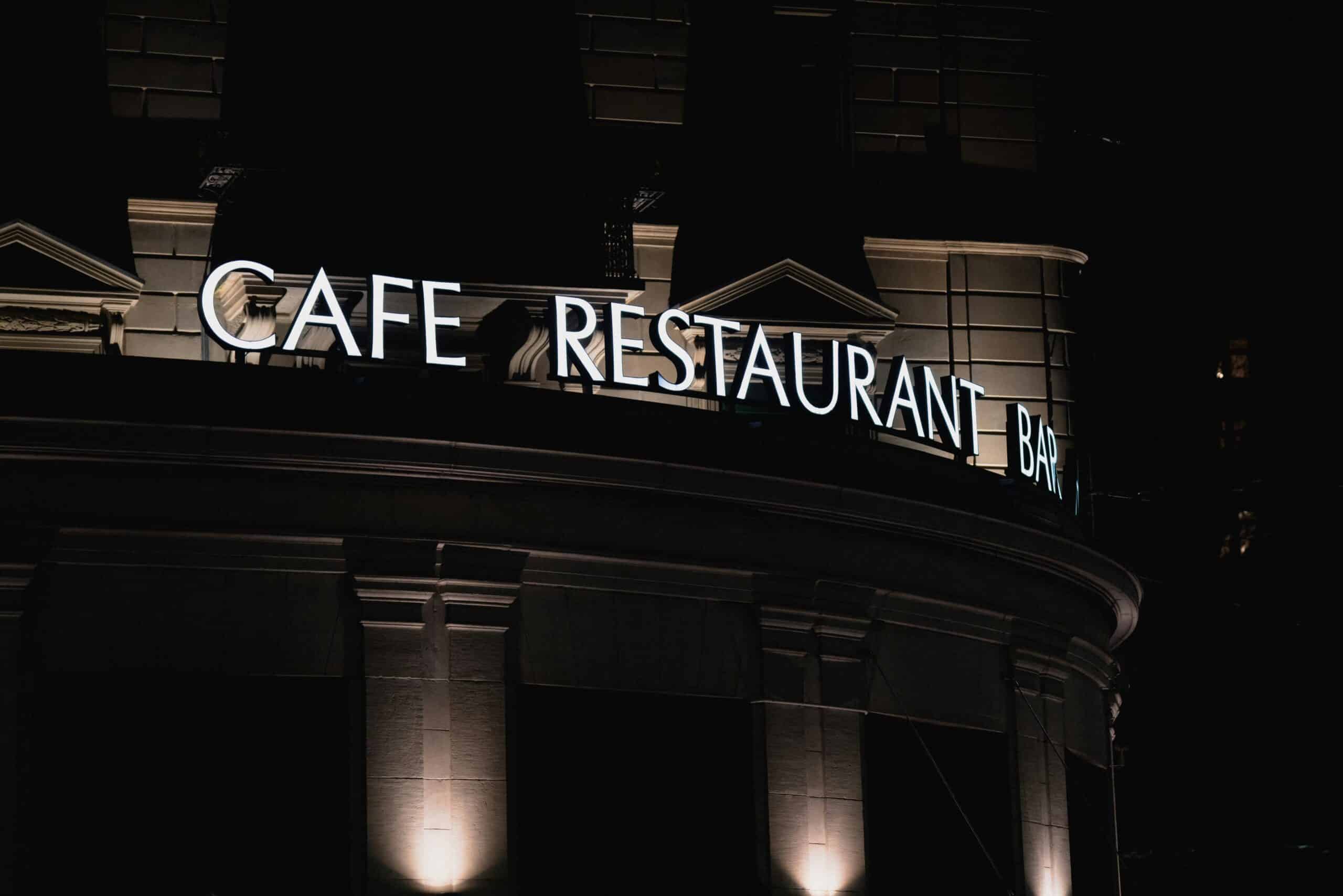How to Create a Restaurant Website That Attracts Hungry Customers
You’ve perfected the art of crafting unforgettable dishes, and your ambiance could give Pinterest a run for its money, yet there’s one ingredient missing in your recipe for growth—a website for your restaurant that’s as enticing as your food.
In today’s online-driven world, a mouthwatering restaurant website is necessary for attracting new customers and keeping regulars coming back. This article explores the key elements that transform a basic website into a powerful tool for your restaurant’s success, from scrumptious visuals to seamless online ordering.
Know Your Audience
Every restaurant attracts a specific type of diner—whether it’s families, hardcore foodies, or fine-dining aficionados. The key to a jaw-dropping website starts here: understanding who you’re catering to.
For example, family-friendly restaurants might benefit from a playful and vibrant design, incorporating easy navigation and features like “Kids Eat Free” offers on the homepage. On the other hand, upscale bistros should look sleek and minimalist, capturing that air of sophistication upscale diners expect. Tailor your tone, imagery, and layout to match your ideal customers’ expectations.
Food Photography—A Feast for the Eyes

We eat with our eyes first—this couldn’t be truer when it comes to restaurant website design. High-quality photography isn’t just a nice-to-have; it’s a necessity.
Here’s your playbook for capturing tempting visuals:
- Food Shots: Your food deserves the spotlight, so don’t skimp on good lighting! Natural light works wonders, but if that’s not an option, invest in soft, diffused artificial lighting to make those rich textures and vibrant colors pop. Imagine that glistening sauce, the crisp crust of your house-made bread, or the fresh herbs adorning your signature pasta dish stealing the show. Strongly consider hiring a professional food photographer. A pro will know how to make your dishes look like works of art.
- Ambiance & Staff: Customers want to picture themselves enjoying your space, so give them a little taste of the experience. Capture happy diners clinking glasses, servers with genuine smiles, and candid moments where your staff’s passion shines through. You’re telling a story here, one of comfort, connection, and delicious experiences. Don’t forget those little details—like a corner booth with perfect lighting or that hand-written specials board that adds just the right touch of charm.

- Video Content: A behind-the-scenes peek can work wonders for your brand. Picture this: your chef plating your signature dessert with that final flourish, steam rising from a freshly made dish, or a bartender skillfully shaking up your best-selling cocktail. Everyone loves a little “insider” magic, so don’t be afraid to include chef cameos or the day’s specials being announced with enthusiasm. It’s authentic, it’s engaging, and it makes your online audience feel like they’re part of your story before they even book a table.
The Menu—Your Star Attraction

Think of your menu as the star of your website. It’s the one thing people head straight to after searching “best pasta restaurant near me.” But—if your menu is hard to read (tiny fonts, poor formatting, or blurry PDFs), people will leave faster than they arrived.
- Readable Fonts: Use clean, modern fonts that are easy to read, no matter the screen size. Think big, clear headings, and enough space between items so things don’t look squished. Your menu should vibe like your food—fresh, appetizing, and worth savoring. And please, no blurry PDFs. The last thing anyone wants is to pinch-and-zoom on their phone just to figure out what’s for appetizers.
- Interactive Features: Add interactive features that make browsing your dishes fun and even drool-inducing. Imagine this—your customers click on “Lemon Herb Risotto” and instantly see a short blurb about how it’s made, what’s in it, and of course, whether it’s gluten-free. Not only that, but pair every item with a mouthwatering photo that practically says, “Eat me now!” Or, filters for dietary preferences like vegetarian, vegan, or extra cheesy. The easier you make it for people to find what they love, the more likely they are to show up hungry (and ready to spend).
- Mobile-Friendly Design: Most folks searching for their next meal are doing it on their phones while they’re mid-snack or already starving. If your menu doesn’t load quickly, doesn’t fit the screen, or makes navigation a chore, they’re clicking over to the next restaurant. A mobile-friendly menu isn’t optional. Keep it snappy, visually appealing, and buttery smooth to scroll.
Seamless Reservations and Ordering
Imagine this—someone lands on your site, they’re drooling over the photos of your signature dishes, and they’re ready to book a table for date night. But wait… where’s the “Book Now” button?
Making reservations and online orders simple and seamless is a must-have. Start with reservations using tools like OpenTable or Resy. They make the booking process foolproof, so your guests can snag a table in seconds. Partner with delivery services like DoorDash, Uber Eats, or set up an in-house ordering system directly on your site for those who prefer to dine at home.

User experience is so important here. Put those all-important buttons—“Book Now,” “Order Online”—right there where hungry eyes can see them, front and center. Keep forms snappy, easy to fill out, and frustration-free. Remember, hangry customers won’t suffer through clunky navigation.
Brand Consistency is Key
Ensure the website for your restaurant stays true to your brand. Are you a cozy, rustic Italian trattoria? Keep the visuals earthy and warm, with terracotta-inspired tones and hand-scripted fonts. Running a modern sushi bistro? Go clean and minimal with whites and pops of bold color.
Brand touchpoints should be consistent—your logo, typography, and tone of voice—all woven seamlessly throughout your site. Consistency builds trust and ensures people feel the same vibe online as when they walk through your doors.
Don’t Forget SEO and Mobile Optimization
Even the most beautifully designed websites for restaurants won’t do much if no one can find them. That’s where SEO (search engine optimization) comes in. SEO might sound like tech jargon, but it’s really about making sure people can find your restaurant online. Start by thinking local—what are people searching for in your area? Research and sprinkle in local keywords like “Italian restaurants in [your city]” or “brunch spots near [neighborhood]” throughout your site. Don’t overdo it, though; you want to sound natural.
Next, make your meta descriptions work for you. These are the little captions that pop up under your website link in search results. Think of them as an elevator pitch—short, punchy, and to the point. For example, “Savor handcrafted pasta made fresh daily at [Restaurant Name], nestled in the heart of downtown Austin.” Doesn’t that make you want to click?
Finally—page speed. If your site takes longer to load than it does to whip up a stack of pancakes, people are going to bounce. Optimize those image file sizes and streamline your site so it feels quick and polished.
And remember, over 60% of online searches are done on mobile. Whether someone’s mid-commute or planning their Friday night, your site must look and function perfectly on every device.
Restaurant Website Content That Sells
Your website is more than just a menu display—it’s your restaurant’s personality and its chance to shine. Engaging content is an important ingredient to connecting with your customers on a deeper level.
- Share Your Story: Why should someone care about your restaurant? What’s the spark that makes it unique? Maybe it’s the family recipes passed down for generations or those late-night “aha!” moments that inspired your menu. Have a chef who tells jokes while grilling? A quirky mascot? A farm that supplies your produce fresh every morning? Don’t be afraid to pull back the curtain and share those behind-the-scenes gems. Guests love knowing they’re eating somewhere with heart—not just another spot on the map.
- Calls-to-Action (CTAs): Once you’ve wowed your visitors with your story, guide them to the next step. “Reserve your table today before someone beats you to it.” or “Order your favorite dish and have it delivered to your door (yes, even in your pajamas).” Be clear, be fun, and be inviting.
Your restaurant website should feel like an open-door welcome, sprinkled with flavor and flair that’ll leave visitors buzzing to experience your food firsthand.
Integrating Your Restaurant Website with Social Media
Your website and social media are like bread and butter. Include links to your profiles on platforms like Instagram, Facebook, and TikTok. Better yet, embed your Instagram feed directly on your homepage to showcase real-time customer engagement and drool-worthy food pics.
Encourage user-generated content by featuring positive customer reviews and photos with captions like, “Tag us @YourRestaurantName to be featured!” Social proof is always a win.
Transform Your Restaurant Website Today
Your restaurant website is more than just an online menu—it’s the ultimate marketing tool for your business. Nailing your site’s design can attract diners, boost reservations, and grow your loyal customer base.
Don’t know where to start? The team at Moonlit Media can whip up something truly delicious for your business. Give us a shout and we’ll make your restaurant website as irresistible as your food!








